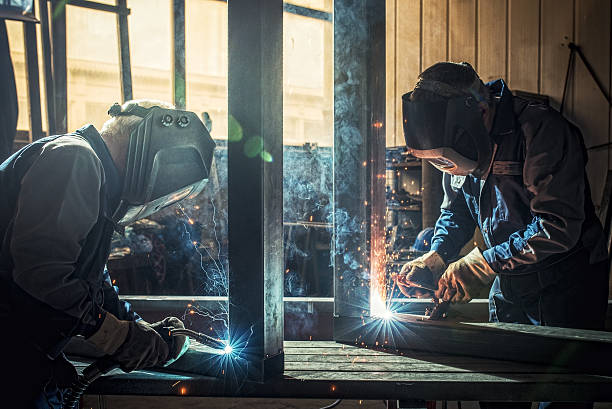Introduction
Every welder, whether beginner or professional, understands the importance of having a reliable workspace. A welding table is more than just a flat surface—it is an essential tool that ensures accuracy, efficiency, and safety. Unlike regular workbenches, these tables are specifically designed to handle sparks, heat, and the unique requirements of welding.
In this detailed guide, we will explore the purpose, features, designs, materials, and benefits of welding tables. Furthermore, you will find tips on how to choose the right model, maintenance guidelines, and answers to the most common questions about welding tables.
What Is a Welding Table?
A welding table is a flat, sturdy work surface designed to support metalwork during welding, grinding, cutting, or fabrication tasks. These tables are built with heat-resistant materials such as steel, ensuring they can withstand sparks, high temperatures, and heavy loads.
Key characteristics include:
- Flat and even surface for accurate welding.
- Heat- and fire-resistant design.
- Clamping holes or slots for securing workpieces.
- Durable construction capable of handling heavy metal.
Why You Need a Welding Table
A welding table is not just a luxury; it is an essential component of any welder’s workshop.
- Safety First: Prevents accidents by providing a stable, fireproof workspace.
- Precision Welding: Ensures accuracy by keeping workpieces level.
- Better Productivity: Saves time through secure clamping and easy adjustments.
- Versatility: Supports cutting, grinding, measuring, and assembly.
- Durability: Withstands sparks, heat, and heavy loads for years.
Popular Uses of Welding Table
1. Professional Workshops
Welding tables are standard in fabrication shops, automotive garages, and construction facilities.
2. Home Welding Projects
DIY enthusiasts rely on them for small-scale repairs and hobby projects.
3. Industrial Manufacturing
Factories use specialized welding tables for precision assembly.
4. Educational Training
Trade schools and training centers equip classrooms with durable welding tables.
5. Mobile Welding Units
Portable welding tables serve contractors who travel to worksites.
Types of Welding Table
1. Fixed Welding Table
Heavy-duty and stationary, designed for long-term use in workshops.
2. Portable Welding Table
Lightweight and foldable, suitable for mobile welders and small spaces.
3. Modular Welding Table
Customizable with interchangeable parts, perfect for complex projects.
4. Tilting Welding Table
Adjustable angles provide better access for precision welding.
5. Professional Fabrication Tables
Large, grid-patterned surfaces for clamping and high-volume work.
Materials Used in Welding Table
- Steel: The most common, durable, and heat-resistant.
- Cast Iron: Provides a flat, vibration-free surface.
- Aluminum: Lightweight but less resistant to extreme heat.
- Combination Materials: Steel frames with replaceable plates.
Standard Sizes of Welding Table
The size of a welding table depends on usage.
- Small Portable Models: 18″ × 30″ (ideal for light DIY projects).
- Medium Workshop Models: 3′ × 4′ or 4′ × 6′.
- Large Industrial Models: 5′ × 10′ or bigger for fabrication plants.
Features to Look For in a Welding Table
- Flatness & Stability: A level surface ensures precise welding.
- Clamping Options: Holes or slots for securing metal pieces.
- Weight Capacity: Must support heavy loads without bending.
- Heat Resistance: Built to handle sparks and extreme temperatures.
- Mobility: Lockable wheels for flexible movement in workshops.
- Adjustability: Tilting or height-adjustable options for ergonomic use.
How to Choose the Right Welding Table
- Define Your Needs: Professional vs. hobbyist use.
- Measure Your Space: Ensure it fits comfortably in your workshop.
- Set a Budget: Balance affordability with durability.
- Check Reviews: Learn from other welders’ experiences.
- Consider Accessories: Shelves, clamps, or storage add convenience.
Welding Table Accessories
- Clamps and vises for securing metal.
- Magnetic squares for holding angles.
- Shelving for tool storage.
- Table extensions for larger projects.
- Casters for easy mobility.
Maintenance and Care Tips
- Keep the surface clean of slag and rust.
- Apply anti-spatter spray to protect against weld residue.
- Store in a dry place to prevent corrosion.
- Regularly inspect for cracks or uneven surfaces.
Welding Table vs. Workbench
| Feature | Welding Table | Regular Workbench |
|---|---|---|
| Heat Resistance | High (metal surface) | Low (wood surface) |
| Safety | Fireproof | Flammable |
| Durability | Designed for welding | General-purpose |
| Features | Slots, clamps, grids | Flat surface only |
Cost of Welding Table
Prices vary depending on type and material:
- Entry-Level Models: $100 – $300
- Mid-Range Options: $400 – $900
- High-End Professional Tables: $1000 – $5000+
DIY Welding Table
For welders who enjoy building their own equipment, a DIY welding table can be cost-effective. With steel sheets, square tubing, and welding skills, it is possible to build a custom work surface tailored to personal needs.
Eco-Friendly Welding Table
Some manufacturers use recycled steel and eco-conscious processes, making sustainable welding tables a growing option for environmentally aware fabricators.
Future Trends in Welding Table
- Smart Welding Tables with built-in measuring systems.
- Ergonomic Designs that reduce welder fatigue.
- Hybrid Surfaces combining steel with replaceable plates.
- Automation Compatibility for robotic welding stations.
Best Places to Buy Welding Table
- Online Retailers: Amazon, eBay, and specialized welding sites.
- Hardware Stores: Home Depot, Lowe’s.
- Welding Supply Shops: Lincoln Electric, Miller Welding.
- Custom Fabricators: Local workshops that design to order.
Frequently Asked Questions (FAQs)
Q1. Why do I need this table instead of a workbench?
A welding table is designed to withstand heat, sparks, and heavy metal, while a regular workbench may burn or warp.
Q2. What is the best size for this table?
Most welders prefer medium sizes (3′ × 4′ or 4′ × 6′) for versatility, but large projects may require bigger tables.
Q3. Can I build my own table?
Yes, many welders build DIY welding tables using steel plates and tubing for cost savings.
Q4. What features should I look for this table?
Flatness, durability, clamping holes, and heat resistance are essential.
Q5. Are these portable tables strong enough?
Portable models handle light to medium work, but heavy-duty welding requires a fixed table.
Q6. How much weight can this table hold?
Professional models can support several hundred pounds, depending on design and material.
Q7. Can this table rust?
Yes, but regular cleaning, coating, and storage in a dry place can prevent corrosion.

